#slab and coil method
Explore tagged Tumblr posts
Text
Making a separate post for this bell ringing video I took cause it didn’t fit in the last post.
#ceramic bell#ceramic glaze#ceramist#ceramics#radio clear glaze#taffy glaze#underglaze#nail polish#solid hollow technique#slab and coil method#pinch pot#moomin fanart#moomin art#ninny moomin#moominmamma#moominvalley#moomin#Moomintroll#snorkmaiden#artists on tumblr#artist support#original art#new art tumblr#new artist#3d artwork#stoneware clay#clay art#clay#high fire reduction
28 notes
·
View notes
Text
The body felt weightless at first, as if floating in the space between existence and oblivion. A deep, steady hum reverberated through every muscle fiber, through every nerve, sinking deep into the marrow. It wasn’t painful—not exactly. More like a slow, methodical unraveling, each thread of identity being delicately pulled apart and rewoven into something else, something unfamiliar yet inexplicably right.
The hands on the table—his hands—twitched involuntarily. The skin had been pale, soft, smooth from a lifetime of careful grooming and deliberate avoidance of hard labor. Now, the color deepened, darkening like wood left to cure in the sun. The fingers lengthened, thickened, the palms broadening as calluses sprouted like old memories resurfacing. He could feel them—every ridge, every hardened patch of flesh, as if they’d always been there.
A sharp sensation in his jaw snapped his focus upward. The teeth—his teeth—shifted in his gums, loosening, unmooring from the very foundation of his skull. He tried to cry out, but the sound gurgled in his throat, caught in the sudden thickening of his vocal cords. The taste of copper flooded his mouth as the old teeth tumbled, clinking against his tongue like discarded relics. The new ones grew in their place—larger, stronger, imperfect in a way that bespoke a life lived fully, a history written in enamel and bone. A slight gap between the incisors, a pronounced bite, the canines sharper, made for tearing rather than neatly slicing.
His lips swelled, the thin, barely-there line of his old mouth plumping into something fuller, richer in hue. He could feel them pressing together differently, the movement unfamiliar as his tongue traced the new landscape inside his mouth. The nose broadened, the bridge thickening, the nostrils flaring slightly as they settled into a shape built to command presence. His breathing deepened, chest expanding as his lungs adjusted to the new capacity, the air filling him in a way it never had before.
Heat coiled at his core, radiating outward in slow, deliberate waves. His thighs thickened, muscles stacking upon muscles, the bones themselves stretching, recalibrating. His old body had been slight, with legs that barely carried weight beyond necessity. Now, they bore the foundation of something heavier, stronger. The calves bulged, the feet lengthening, widening, the arches pronounced, made for standing firm, for balance, for grounding.
A sudden, unfamiliar heaviness settled between his legs. His breath hitched, eyes widening as the sensation rippled through him. The weight of it—the unmistakable presence of what now hung between his thighs—was undeniable. The skin there tightened, reshaping, reforming. The feeling was alien, overwhelming, the sheer bulk of it altering the way he shifted, the way he sat, the way his thighs now pressed against one another. He reached down instinctively, fingers ghosting over the heavy sack that now rested between his legs, the warmth of it shocking against his palm. His length, once nonexistent, now rested in its proper place, thick and veined, resting atop his new thighs. The sensation of movement, of gravity pulling his balls downward with each shift, was intoxicating in its realness.
The transformation team stood nearby, observing, waiting. One of them, a man with dark, lined skin and eyes that had seen too many such rebirths, stepped forward.
“Take your time,” he said, voice deep and steady. “Your body will feel… different at first.”
A breathless chuckle escaped his lips—his lips, lower now, rougher, the edges of his accent unraveling, reforming. “No shit,” he muttered, the words thicker, his tongue heavier, as if every syllable carried new weight.
His hands traveled upward, across his chest. The soft, lean frame that had once been there was gone. In its place, solid slabs of muscle shifted beneath his fingertips. The pectorals were thick, his nipples darker, more sensitive. He exhaled sharply as his fingers trailed downward, tracing the ridges of his abdomen—abs, real, hard, sculpted in a way that spoke of labor, of sweat, of a body used to exertion.
Hair prickled across his skin, spreading in a slow, deliberate wave. The transformation team had warned him about this part, but nothing could have prepared him for the sensation—the feeling of each follicle erupting, of the coarse, thick strands pushing through his flesh. His chest darkened with it, a deep, rich covering of hair that tapered down to his stomach, merging into the trail that led downward, into the space where his new cock rested against his thighs.
His face was next. He reached up, fingertips grazing the jaw that had been angular, smooth, refined. Now, it was heavier, squared, lined with the scratch of new growth. The beard was thick, full, black with streaks of deep brown, coarse and unruly. He scratched at it, shivering at the new sensation, the way it rasped beneath his fingers.
“You’ll get used to it,” another voice said.
He turned, locking eyes with one of the attendants. The man was already holding a robe, gesturing for him to stand. He did—slowly, unsteadily. The new center of gravity threw him off at first. His gait had changed, the movement of his hips altered by the weight of his thighs, the broadness of his frame. He took a step, then another, feeling the shift in posture, the natural roll of his shoulders, the way his arms now carried an effortless power.
The robe draped over him, the fabric unfamiliar against his newly roughened skin. It was temporary. Soon, he would be dressed in clothing that fit this body, this identity. Clothes that belonged to the man he was now.
His gaze flicked to the mirror across the room
The reflection was a stranger.
And yet—deep in his gut, in the marrow of his bones—it wasn’t.
He stepped closer, hands gripping the edges of the robe. Dark eyes stared back at him. The nose was broad, the lips full, the beard thick and neatly shaped. The hair on his head was short, coarser than before, a deep black with hints of silver along the temples. His new tongue worked inside his mouth, the foreignness of his voice slowly settling into something natural, something known.
“Who am I now?” he murmured.
The transformation team did not answer.
They didn’t need to.
He already knew.

117 notes
·
View notes
Text
Another List of Art-Related Vocabulary

Portrait: A painting, photograph, sculpture, or other artistic representation of a person or group of people that emphasizes the likeness of the subject, especially the face and its expressions.
Preparatory drawing: A full-sized drawing used by an artist to plan the design of an artwork before beginning the actual artwork. The work may be an easel painting, fresco, stained glass window, sculpture, or other object.
Relief: A sculptural composition that stands out from a flat surface, called a plane of relief, in a carved or molded work of art. There are varying degrees of relief—low, middle, and high—depending on the amount of projection from the sculptural surface.
Self-portrait: A pictorial or literary portrait of oneself, created by the artist or author.
Site plan: A technical drawing for the development and intended use of a particular piece of land.
Socle [SOCK-el]: Base or pedestal supporting a column, vase, or statue.
Space: The area between and around objects. The space around objects is often called negative space. Space can also refer to the feeling or illusion of depth.
Squared: A method for transferring a drawing to another, usually larger, surface. Both surfaces are first ruled off into an equal number of squares. The lines within each square are then transferred freehand to the larger, corresponding squares.
Stele [STEEL-lee]: An upright stone slab or pillar that displays an inscription or design and serves as a monument, marker, or commemorative tablet.
Stereograph: A pair of photographs made from two slightly different points of view. When inserted into an instrument called a stereoscope, the images produce a three-dimensional effect.
Stump: A coil of leather, felt, or paper with blunt points at both ends, used for rubbing on chalk, pencil, pastel, and charcoal drawings in order to produce a softer appearance.
Symbol: Something used for or regarded as representing something else; a material object representing something, often something immaterial; an emblem, token, or sign. The practice of representing things by symbols or of investing objects with a symbolic meaning or character is called symbolism.
Tableau: Short for the French term tableau vivant (living picture), this term refers to a group of people arranged as if in a work of art.
Terracotta: Italian for “baked earth.” This term is used to describe objects created out of reddish brown clay fired at a low temperature and left unglazed. Terracotta is used to make pottery, sculpture, architectural decorations, and tiles.
Transfer: The process of transmitting a design from one surface to another.
Veneer: A decorative technique/process in which slender slices of wood or other suitable material are attached onto other pieces of wood, particleboard, or fiberboard panels to produce decorative doors, tops, and panels for cabinets, parquet floors, and other furniture parts.
Wash: A diluted watercolor or ink applied with a brush to a paper surface in a thin, transparent layer. The term usually refers to a uniform area of transparent color covered quickly with a broad brush.

Source ⚜ More: Art Vocabulary pt. 1 2 3 ⚜ Word Lists ⚜ Writing Resources PDFs
#art related#terminology#word list#writeblr#writing reference#dark academia#spilled ink#literature#writers on tumblr#writing prompt#poetry#poets on tumblr#langblr#words#linguistics#art#writing inspiration#writing inspo#writing ideas#albert bierstadt#nature#writing resources
63 notes
·
View notes
Text
Pottery
You cannot convince me that Actor isn't a prissy bitch who hates getting his hands dirty. So I'm making him get them covered in clay.
Actor Mark x GN!Reader, TW: snake imagery Words: 780
“But darling! I don’t want to get my hands dirty!”
Mark whines at you as you lead him into the pottery studio, pouting and dragging his feet. You simply roll your eyes, used to his shenanigans and half-hearted tantrums as part of his diva nature. At least you convinced him to wear something he doesn’t mind getting dirty, although that was an ordeal in and of itself. It’s a bit obvious he doesn’t feel entirely himself without all of the sparkles and furs, but he’ll live for a few hours. At least you didn’t tell him he can’t go full glam with his makeup. He’s head to toe in custom dyed red coveralls, with sparse bejeweling detailing on the legs and back pockets. It was yesterday’s crafting project in preparation for this, paired with a bandana keeping his curled hair protected.
“Oh hush, you’re fine. You are not too delicate to touch some fucking wet clay.”
“But my manicure!”
“You can wash your hands! Washing your hands is not illegal!”
He juts out his bottom lip at you, protesting by pulling you into a hug. It’s only now you realize he’s wearing heels, because of course he is. You turn around, letting him hold you to his chest as you listen to the instructor, who gives Mark a particular look. Perhaps not expecting to see such a famous face in her studio. She doesn’t draw attention to it, and brings you all over to a wheel for a demo. You’re shown several kinds of pottery making: slabs, coils, thrown, and you deliberate over which one you may try. Mark relaxes a bit, and you can tell he’s starting to get intrigued when he leans more over your shoulder. You pat his cheek, which he returns with a small kiss to your cheek. It takes a moment to realize that you most certainly have a lipstick print on you now, but you choose not to draw attention to it.
When you’re all released to various stations with your wedges of clay, you try and get one next to Mark. You remove your ring, adding it to your necklace so it doesn’t get clay on it.
“Darling, could you take mine as well?”
He holds out his ring to you, a golden ring with scaly detailing. You take it, kissing it before adding it on the chain. He can’t help but look as it rests around your neck next to yours, and he melts a little bit. You remind him of the piece of clay in front of him, and his focus shifts back to creating.
You decide you’re going to make a couple espresso mugs for the two of you to drink out of in the morning, making them with the slab method demonstrated. To get handle specifics, you take Mark’s hand when he’s not paying much attention, holding his fingers up to the strip of clay to make sure it’s big enough for him to hold comfortably. He freezes, a bit baffled as to what you’re doing.
When you look over at his project, you see several ropes rolled out, covered in score marks.
“What are you making, sweetheart?”
“I’m not sure yet, I got stuck in the loop of making snakes…”
“What about, a jewelry tray? Maybe one that we can put our rings into in the bathroom for bath time?”
“Oh, I like that idea. Do I have to get rid of the snakes?”
“I don’t think so. Maybe make them all squiggly together so it looks like a bunch of snakes. It’ll look cool once it’s glazed.”
Mark nods, squeezing your hand before taking it back, starting to curl the coils together to create his tray. Once your espresso mugs are to your desired measurements, you place them on the shelves to dry out to leather hard. After washing your hands, you go back to your shared bench and watch Mark, leaning into his space with dramatized intrigue.
“How’s the tray coming along?”
“I like it! And I made a spot where our rings should rest, like they’re the eggs being protected.”
Your heart warms at his sweetness, looking at the detailing he’s put into it. You help him get it over to the shelves, and slip his ring back on his finger when his hands are washed again.
“Trying to marry me again, mi amor?”
“Maybe. We’ll have to come back tomorrow so I can do it again.”
The two of you walk out to his car, happily putting the top down for the ride back.
“So was pottery class the hell you thought it’d be?”
“No, but tomorrow I’m bringing moisturizer.”
Of course he is.
#actor mark#markiplier actor#wkm actor#wkm actor mark#actor x reader#actor mark x reader#wkm actor mark x reader#markiplier egos#dramatic diva#chaoswrites
22 notes
·
View notes
Text

𝑪𝑳𝑶𝑺𝑬 𝑸𝑼𝑨𝑹𝑻𝑬𝑹𝑺 // 𝑨 𝑺𝑼𝑷𝑬𝑹𝑩𝑨𝑻 𝑺𝑻𝑶𝑹𝒀
𝐂𝐡𝐚𝐫𝐚𝐜𝐭𝐞𝐫𝐬: Bruce Wayne (The Batman) , Clark Kent (Superman)
𝐏𝐚𝐢𝐫𝐢𝐧𝐠(𝐬): Bruce Wayne/Clark Kent, SuperBat
𝐖𝐨𝐫𝐝 𝐂𝐨𝐮𝐧𝐭: 7/? (27,834)
𝐓𝐚𝐠𝐬: Bruce Wayne (The Batman) , Clark Kent (Superman), SuperBat, Bruce/Clark, Pattinson!Batman, Corenswet!Superman, Human!AU, Body-guard!Clark Kent, Stalker!AU, Enemies to Lovers,
𝐖𝐚𝐫𝐧𝐢𝐧𝐠𝐬: Stalking, Violence, Dark-themes, PTSD, Eventual Smut
Bruce Wayne is no stranger to the spotlight—or the shadows it casts. Reclusive, haunted by tragedy, and heir to a name that carries more weight than comfort, he now faces something far more personal than public scrutiny: a stalker. The letters arrive like clockwork—taunting, obsessive, familiar. And with Halloween approaching—the anniversary of his parents' death—the tension coils tighter.
Clark Kent is a disciplined, quietly intense MMA-trained security specialist, brought in under General Sam Lane’s orders to keep Bruce safe. He expects a job. He doesn’t expect the gothic cold of Wayne Manor, the brooding silence of its only resident, or the unsettling depth of what Bruce refuses to say out loud.
But as danger creeps closer, and the mystery surrounding the stalker sharpens, Bruce and Clark are forced into uncomfortable proximity. What begins as resistance slowly becomes something deeper—something fragile and real.
𝑪𝑳𝑶𝑺𝑬 𝑸𝑼𝑨𝑹𝑻𝑬𝑹𝑺 // 𝑨 𝑺𝑼𝑷𝑬𝑹𝑩𝑨𝑻 𝑺𝑻𝑶𝑹𝒀
The city felt like it hadn’t breathed in days.
The sky above Gotham loomed in a thick slab of gray, dull and heavy, like concrete pressed against the horizon. No rain - not yet - but the clouds threatened it.
The kind of cold, dry stillness that settled into the bones and made people bristle in their coats. The kind of stillness that always came before something broke.
The black car glided silently through the narrow roads leading toward City Hall, its tinted windows catching the reflection of flickering street lamps and news vans parked crookedly against curbs.
Inside, Bruce sat in the passenger seat, unmoving. His fingers tightened slightly around the cufflinks Alfred gave to him, though his expression betrayed nothing.
Clark drove with quiet precision - not a word spoken since they’d left the Manor. There was no need for small talk.
Not today.
His eyes scanned every alley, every passerby, the tension in his shoulders a mirror to Bruce’s own, just dressed differently. One born from duty, the other from something much older. Wounds that had never scabbed over. Names whispered for too long.
As they approached, the city’s noise began to swell: murmurs, footsteps, the drone of cameras powering up. Then the signs came into view.
Makeshift memorials lined the City Hall steps. Candles burned low in wax puddles, and flowers wilted under the absence of sunlight. But it was the signs that chilled Bruce’s blood.
“SCRAWLED QUESTION MARK IN CROSSHAIRS.”“OUR DAY OF JUDGEMENT.”“NO MORE MASKS.”
He felt it in his ribs - that quiet, aching pressure - like being dragged beneath water by something he couldn’t see.
Clark pulled the car up alongside the barricades. A security team glanced toward them before recognizing the vehicle. They gave the nod. The doors unlocked.
Bruce made no move to exit, not at first. His eyes lingered on the sea of mourners and press beyond the glass. Their faces blurred together - anger, grief, curiosity - all of it aimed outward, waiting for something to bite.
Clark opened his door and stepped out first, adjusting the sleeves of his dark suit, a whisper of fabric against the hush of the crowd. His eyes swept the perimeter with methodical precision before circling around to open Bruce’s door.
The moment Bruce’s foot hit the pavement, it began.
“…is that Bruce Wayne…?”
Heads turned the instant Bruce stepped out of the car - like birds catching the scent of blood in the air.
#corensupes#the batman#the batman 2022#the batman spoilers#batman superman#batman#batman comics#robert pattinson#david corenswet#superman#clark kent#dc superman#dc batman#bruce wayne#superbat#clark kent x bruce wayne#worlds finest#bruce wayne imagine#dc comics#bruce wayne x superman#ao3 fanfic#ao3#ao3feed#archive of our own#fanficiton#batman fanfiction#superman fanfiction#crackship#the superman 2025#headcanon
12 notes
·
View notes
Text
Mumbo- Hermit A Day May
hello!!! welcome to Mumbo's day in the eclipsed au!! (is this the official name reveal?? outside of the tags?? whoops)
I had a lot of fun writing him and doing some more world building in this au!! hope you enjoy it too <3
---
Mumbo is sure that this will work. It has to. The Electric Totem pokemon is notoriously hard to find, especially when it comes to battling. But Mumbo can’t leave the challengers disappointed!
What, is he supposed to turn them away? ‘Sorry, it doesn’t feel like battling. Come back later and maybe it will.’ No! He can’t just leave them disappointed, and he can’t hand out Electrium Z for nothing either. That’s the easiest way for him to lose his job as Trail Captain.
And Bigb will start making more frequent visits rather than just roaming the island, and Mumbo can’t handle more frequent visits from Bigb. Not after…the Incident.
So he needs a solution. Studies have shown that Electric type pokemon are attracted to electrical surges, and the Totem pokemon typically prefer a special frequency. So, if he plays the frequency and causes an electrical surge, the Totem pokemon should show up. Probably. If he does it correctly. And the Grass Trial involves a summoning method of some sort, so in theory this will work.
But can he test it? Mumbo isn’t…the best at battling. And the Totem might get mad if he battles it while he’s not a challenger. Scar doesn’t have any problems with battling his Gumshoos, and he’s heard about Lizzie and Wishiwashi’s epic battles. But what if it hates him?
He paces anxiously, fidgeting with the spring coil he picked up. Thankfully Doctors Slab and 77 did an in depth study into Totem pokemon and he can reference that. And probably (maybe) get a paper published on this. If, no when it works.
Mumbo crosses the room to his work station. The computer flickers to life with a small wiggle of the mouse, displaying the charts and graphs and research he’s done for this.
It’ll work. It has to.
“Er, Mumbo?”
“Yes?” He turns to face Xisuma, the man in charge of the facility.
“There’s a challenger on her way. Etho just messaged me to let me know that they’re on the bus.”
“Fantastic! I’ll just clean this up a little bit then—”
“It’ll go well. You’ll do a good job.”
He swallows. “But what if I don’t?”
“Then you get better for the next person. If something goes wrong, then you fix it. It’ll be fine.” X smiles reassuringly at him and Mumbo gives him a shaky smile back. “Now, why don’t you go grab something to eat? I’ll make sure that there’s enough room for someone else to stand in here.”
Mumbo huffs a small laugh. “Okay. Okay. I’ll be right back then.” He leaves X to watch the room and navigates the crowded hallways to the small break room in the back. On his way, he can’t help but glance out the window. The bus has already arrived and he can see a girl with bright red hair talking to Professor Slab.
He makes himself eat a granola bar—kept specifically for him, probably—and makes his way back to his room. X isn’t in there, but he left a note.
‘Good luck, Mumbo! You’re going to do amazing!! - X :)’
He sticks the sticky note to the frame of his computer and waits. Energy surges around him, thousands of possibilities opening up to him. Maybe it will go well. Maybe he doesn’t need to be worried. But he’s Mumbo Jumbo, so he’ll probably worry anyway. As usual.
#indi writes#hermitaday#mumbo jumbo#Eclipsed Pokémon Au#hermitcraft fanfiction#not sure what else to tag this with#I think this is the most I've written that my friend doesn't know about#-> my friend who I tell everything about this au. of course
9 notes
·
View notes
Text
[fantasy au drabble, ft. suo & his brother]
Suo Hayato had been seven when he was chosen as the year's sacrifice.
It should not surprise him to see how differently the villagers treated him now - after all, the same thing had happened last year. A girl of six had been carried up the mountain, and Suo had joined the solemn procession delivering her to her death.
But this? This he did not expect.
"Just checking the knots," his brother answered. "Hayato can be a very cunning little fox, after all."
The guard seemed to agree with this point. "Make it quick."
"Very well."
Hayato was pulled into a sitting position; he wriggled his fingers to get some feeling back into them.
"Please..." He looked up at his brother in desperation. Surely, surely..? Surely he would not let this happen to Hayato?
His brother had held his hand so tightly during the procession last year.
Now he didn't even meet his eye, tugging at the ropes methodically. Hayato lowered his head, angry at the weakness he had shown. He was trained to be dignified at all times.
Something sharp and cold was pressed into his hands. Hayato felt it being maneuvered until it was out of sight, hidden by his bound hands and the thick coils of rope.
Could it be..? His heart banged painfully in his chest.
"Alright," his brother called, pushing Hayato down again.
"No love lost between you two, huh?" the guard sneered, but by then his brother was already halfway down the steps.
-
The moon was a pale orb between the branches of the dead tree above him. Hayato stared up at it, set out on the cold stone slab like the main course on a banquet table.
"I would like a word with him." A familiar voice caught his attention.
"No."
"It won't be long; I'll stay within sight the whole time." His brother suddenly put on an expression Hayato had never seen before. "Please."
Submissive, imploring. Somehow, that scared Hayato more than anything. He found himself struggling to breathe.
"Fine." With an annoyed jerk of the head, permission was granted.
His brother set up a transparent barrier around the slab as he drew near. Hayato recognized it - it stopped sound from travelling out from within its perimeter.
"You'll doom the whole village," Hayato said. If - no, when - he escaped, the beast would surely bring its wrath down upon the villagers.
"That remains to be seen." His brother smiled sadly. "And I find myself unable to care."
Hayato wanted to say something more, but no sound made it past his lips.
"Run, and never look back. Don't come back to the village. Not for me, or anything else." A hand settled upon his head. "You've been brave, but now you will have to be braver. Promise me, Hayato."
Hayato was desperately trying to commit the warmth of his brother's hand to memory. "I promise."
"Good." The hand left. "Have you started work on the ropes?"
Hayato shook his head. "Didn't want anyone to be suspicious." Of you.
A sigh. "I knew it. You've always been so kind, Hayato. That may be your downfall one day."
"But not today."
"Not today," his brother agreed with a flicker of a smile.
Later, after the villagers had turned their backs on him and left him to his fate, Hayato positioned the knife and sawed at the ropes with single-minded determination.
He did not stop when birds erupted from the canopy somewhere nearby. Neither did he stop when faint reverberations traveled up the stone slab, signaling the arrival of some great beast.
He did not stop until the last coils of rope fell from him.
Suo Hayato was trained to be dignified at all times.
But above all, he was trained to survive.
#wind breaker (satoru nii)#suo hayato#suou hayato#wei writes#from the alleywei#im thinking about the mysterious '兄弟' in suos profile at all times#(yes. it shows)#haughhhhh ive never posted a drabble. Like This#drops this and RUNS
18 notes
·
View notes
Text


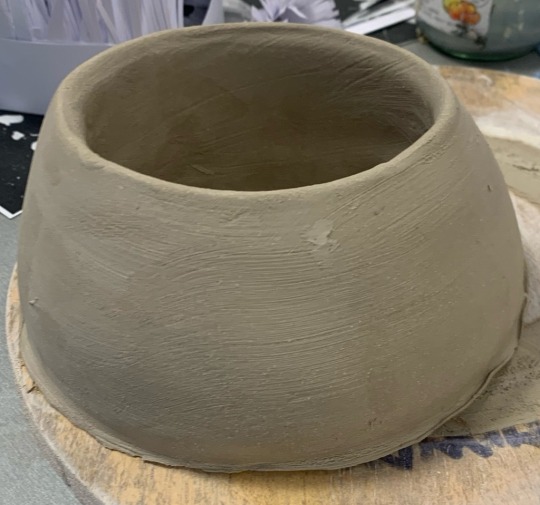

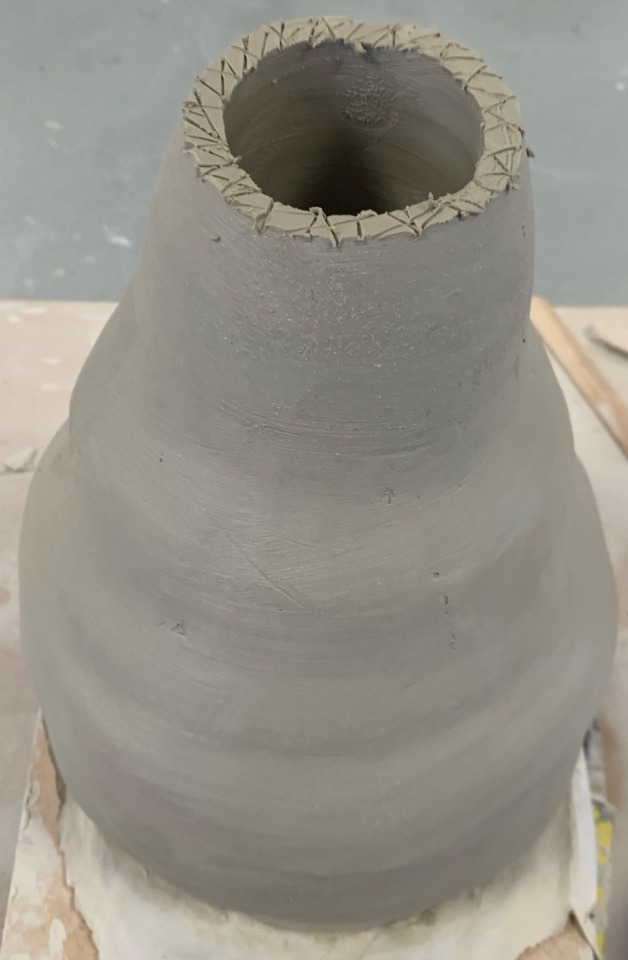
Ceramic pig head- Part 1
I began by using the coiling method to create the base of the pigs head as I was nervous of making such a thick and heavy object on the wheel as it would be very hard to control and I wouldn't be strong enough to manipulate the clay. so I laboriously built up the clay with coiling. I then thew the middle connection piece and cone nose section on the wheel. Once dried sufficiently with the help of a hairdryer, I could slip and score each piece and build it onto the base slowly. I then slabbed some thick coils of clay to the joints to enforce the structure and it gave it some form also. This was a tiring process of building up and smoothing down with a wet sponge. once I felt the structure was sound, I could move on to the modelling stage.
2 notes
·
View notes
Text
So, about that "Marauder" build I was doing...
Breaking news: it is no longer a Marauder build!
For context of the people who randomly stumble across this post without all the lore and shit from my megapost back in August, first of all, hi, welcome to the blog, second of all, this was originally intended as a "recreation" or full copy of a pretty obscure mid-'60s Fender guitar that never saw full, mainstream production - the Fender Marauder.
For further context, the Fender Marauder was a guitar that got a mashup of all of Fender's offsets, plus the Stratocaster, getting the Strat's pickup layout, a pickup selection method similar to the Jag, the Jazzmaster's lead/rhythm circuit, plus a vibrato like the Mustang, and the headstock of the Starcaster, which didn't exist at that point, so it's technically that the Starcaster had the Marauder's headstock, rather than the other way around...
Where was I? Ah, yes, not doing the Fender Marauder. Yeah, no, it's not happening anymore. Instead, the build has, for lack of a better term, "pivoted", thanks to an idea my aunt gave me: doing something original.
Now, in Current Year (2024 is soon to end, and oh dear god it's almost a year since I had the idea for the Tele-Shaped Rickenbacker), originality in the guitar-building world is... not exactly a thing? There's that many Telecaster and Stratocaster copies, combined with the fact that there's only so many ways you can shape a slab of wood into a pleasant experience to play.
My solution? The academic method! And by that, I mean "instead of ripping off one guitar and calling it a day, I'm ripping off multiple guitars," or at least taking from multiple sources, as an academic should.
If you want to see more of this madness, keep reading under the cut.
You still here? Awesome. So, now that you've chosen to read on, let's go through the spec sheet that I made for this exact purpose! Surely, it can't be that incomprehensible, ri-
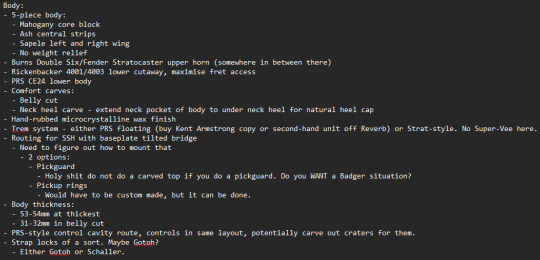


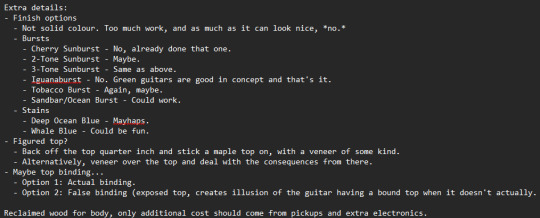
...oh.
Yeah, I went really in-depth. I even mentioned the fucking fretboard radius, that is how in-depth I went. Now, does this in-depth nature help? Oh yeah, certainly. Is it comprehensible? Nope. Not in the slightest. Not unless you browse Wikipedia for fun or watch way too much of Trogly's stuff.
So, a small glossary of terms, before we get into this shit properly:
Comfort carves: bits of wood removed from the body of the guitar to allow for better playing experience, originating with the Stratocaster.
Trem system: also known as a whammy bar or vibrato, this is how you get those reductions in pitch.
Coil split and coil tap: either factoring out one coil's output (split) or removing the effect of some of the windings of the coil (tap).
That's nowhere near all I've got to explain, but if any of you wanted, I'll put out a "translated" spec sheet that attempts to properly explain the shit. Anyway, where was I? Ah yes!
The build no longer being a Marauder has freed me up to do whatever I want now, which leads me to the body design (further screenshots will come from the translated spec sheet mentioned above):

So, let's discuss why those three specifically. But first, were they the original ideas? Not in the slightest! Originally, this was going to be FAR more Gibson-inspired than this, taking from the Scarred Reaper (a Jagstang style merging of the Les Paul and SG created by the aforementioned Trogly, I would recommend you watch his stuff if it wasn't so Guitar Nerd) and the SGV/ZV (that Zakk Wylde signature thing the Gibson custom shop cooked up), with maybe a single-sided headstock.
That idea's gone, DOA when further thought was brought in. The new idea, as specified in the image, is a hodge-podge of 2 guitars and a bass, all 3 of which I've played previously in some manner or form. The upper horn of a Burns Double Six, which (for those less educated in guitars, or can't just visualise a guitar from memory as soon as it's brought up in a conversation) looks like this:
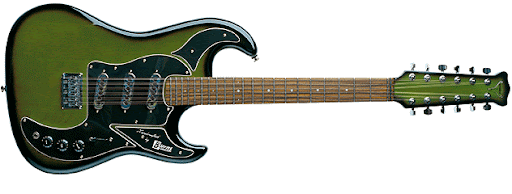
Yes, the guitar body looks like that. Plays beautifully, or at least the one I played does.
So that's the source of the upper horn, even if it'd be less exaggerated than that. What about the other two? Let's start with the lower cutaway, inspired by the Rickenbacker 4001 (or 4003) bass.

Note how the fret access is incredibly good? Yeah, that's not just a thing on the bass. Rickenbacker also make/made a guitar version of this, the 480 (plus a short-lived version known as the 481 with slanted frets - not fanned, slanted), with at least 21 frets of perfectly fine access to frets, and 24 frets total on the neck.
Finally, the PRS CE24, which is being used for the lower body of the guitar:

I could go on for several paragraphs about how and why I'm going with the lower bout of a CE24 for this, or even that I'm basiclally making this a more PRS-style Strat than the John Mayer Silver Sky. But, I won't. Quite simply, I have neither the time nor the energy. Instead, what I'll do is summarise, because I can't put a second read-more link in here.
So, why is it a PRS-style Strat? Well, many reasons. I'm thinking of putting in a PRS floating trem system, doing a 10-degree headstock angle (enough to have the tension, but not enough to risk headstock breaks - looking at you, Gibson, with your 17-degree headstocks!), and, most importantly, I'm going for a 25" scale length, which effectively gives me the very basics of a PRS guitar, minus the construction and the pickups.
But continuing from there, the only thing preventing this from being a "normal" PRS build or similarly designed guitar is the pickups I'm using. They're not any of the usual fare that PRS use, not by any stretch of the imagination. What I'm planning on using is, as laid out in the spec sheet, a Fender-style Wide Range Humbucker, a reverse-wound, reverse-polarity Tri-Sonic imitator (because I don't want to try and source Burns or Adeson pickups for this, so Kent Armstrong it is), and a Tonerider Hot Classics Broadcaster bridge pickup (it's the bridge pickup specifically because a Telecaster's bridge pickup is tilted with a black bobbin). Now, dear reader, can you guess what positions I'm going to put them in?
If you guessed that I'm going to be sane and normal by putting the humbucker in the bridge, you're entirely incorrect, unfortunately! Instead, I'm going for an at least sane positioning for the Broadcaster pickup, putting that next to the trem system, or at least as close as can be within reason, that RWRP Kent Armstrong Tri-Sonic in the middle position, and the humbucker in the neck position.
The result of that, in concept, should be a fuller sound in the neck, and depending on how I wire the pickups (which will most likely be in series) a really bitey sound in the bridge, the kind that gives some levels of distortion a run for its money. A comparatively "thin" sound is to be expected, as this project is to have 24 frets, and thus a tighter pickup spacing.
The idea is similar to this guitar made for Alex Lifeson by Paul Reed Smith (yes, that's what PRS stands for), which uses an EMG in the neck, and a Signature Guitars single coil in the bridge, with Signature Guitars being a short-lived brand that Lifeson worked with in the mid-to-late '80s until the company's dissolution in 1990.
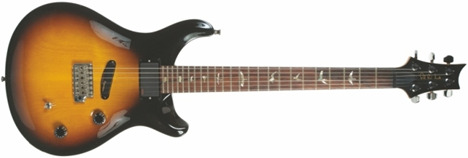
That's partially what's inspiring me on this specific pickup configuration, as I've heard the tones that this specific guitar's made, going back to at least 1991, for the solo on Dreamline. Considering the guitar's serial dates it to 1990, so it's likely he got it from PRS for the explicit purpose of recording the Roll The Bones album.
But that's not important, nor is it even the point, because damnit, I love rambling about tangential shit! Anyway, to get back to the point of this rambling, this is a PRS-style Strat in the least Strat-like manner. None of the parts I took from are a Strat, or really have any relation to it outside of the Double Six. The CE24 is inspired the double-cuts that Gibson made, and the 4001 was made back when originality was actually a thing in guitar design.
But the result of all that designing, combined with a little bit of image compositing, was this:
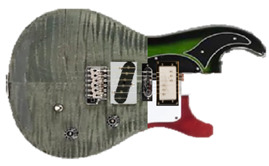
Now, I'm aware that this design, for lack of a better term, looks like shit. It's way too stretched out, and nowhere near like realistic. In my full defense, this was made in Paint at close to midnight, so I doubt I was thinking at full brain power. I'll probably de-stretch it at some point, if I can be arsed to do so.
The neck, by comparison, doesn't look nearly as bad, but considering how hard it is to fuck up the look of a neck, it's not that big a deal. The idea of a neck is to give an anchor point for the non-ball end of the string that allows for a tension adjustment point, with the fretboard acting as the point where frets change the note/pitch the guitar plays.
As God Pythagoras Intended.
Side note, fuck that guy! He broke music 2000 years ago, and we still haven't recovered!
Back to the matter at hand, though, my compositing process for the neck was based on inlay style, number of frets, and headstock shape. Now, I mentioned above that I was doing a 2-octave neck, 24 frets total. The "neck" (by which I mean the fretboard) was taken from a Rickenbacker 360, and the headstock shape was taken from a Gibson Firebird, the last remaining relic of this thing's Gbison influences, resulting in this composite:

Please note that the transparency for all this was done in Word, which is the best I can use to get specific bits and pieces of guitars to mash up and weld together like fucking Victor Frankenstein.
The full thing, combining both neck and body composites, came out of this process looking like this...
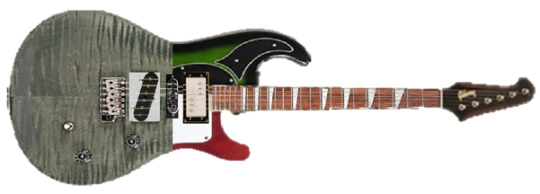
...as you can see, very squashed, very stretched, which was not the intention, I assure you! So, as a help to my brain, and possibly to the very few people who stumble across this who know good proportioning, I squashed the width down a bit further, albeit at the cost of making the neck feel too short for the body:

I could throw a squashed down version of the body back into Paint, add the standard-sized neck, and operate from there on the image front, but there's a small issue of CBA to contend with. In short, I can't be bothered to do it.
Now, you might note that the headstock lacks tuner tips. Why? Because the Firebird had planetary tuners, what some would term "banjo tuners". The basic idea is that, to facilitate string pull, they made a new headstock design (because before this there were 3 Gibson headstock styles - open book, which was the standard one, triangle, for the Flying V and related models, and hockey stick, which only got used on the Explorer until Aldo Nova came along in 1982). This new design utilises the planetary tuners for... some reason, Idk, I can't find it. Point is, at first, this is what I was going to go with, Firebird headstock shape and all.
However, upon further rational thought, I'm just going to go with a Hamer-style headstock, specifically one like the Hamer USA Centaura, which looks like this:
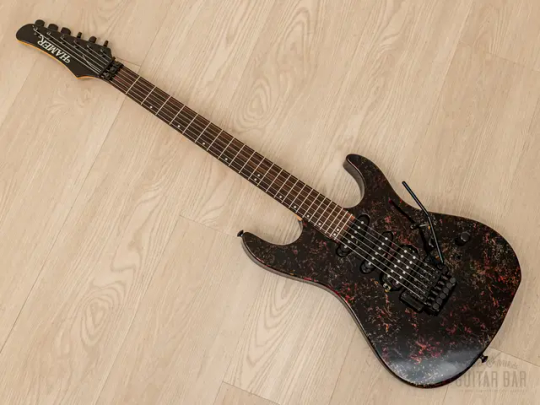
I was kinda debating on putting a Floyd Rose or similar on this, being influenced by this thing, but they're not exactly cheap to install, replace or repair, so that's why the PRS trem. The one thing I'm still debating on from this is the "sweet switch", which was designed for Carlos Santana by PRS, purely because he was known for using a long cable prior to going wireless. But that's not the point.
What is the point? Fuck if I know. I've been writing this on and off over the past 2 or 3 days, I just set out to make an in-depth Tumblr post about my guitar build, and here I am talking about a Hamer and Carlos Santana. To try and steer myself back to the point, let's talk the unique bits, stuff I've only seen done... 2 or 3 times, total. In this case, I'm talking about unique pickup selection methods.
There's a couple I have in mind for this build: a rotary switch, and individual slider switches. Now, why are these unique? Because both are rare to see on production-level guitars. The former comes from PRS guitars from the '90s, which worked really well, except people couldn't figure out what pickup they were on, while the latter I've only seen in 2 different styles on a total of 3 guitar models.
Style 1 is what I'm thinking of doing: Jag style, where there's a control plate to select what pickup you're using, and you can select and swap on the fly, which is similar to the Red Special, which has 3 pickup switches and 3 phase switches - the top row is pickups, and the bottom row is the phasing. Brilliant bit of kit for a guitar built 60 years ago.
Now, the other style of switching is a bit more convoluted than that, because it's Mustang switching, which is 3-position sliders mounted horizontally above each pickup. Position closest to the bridge is off, central is on, and position closest to the neck is out of phase. Sounds like the Red Special's method but condensed into 3 switches, right?
Well, the fact of the matter is that Brian's design and build was done between 1963 and 1964, and the Mustang didn't enter production until the latter year, so it's likely but not certain to be a case of convergent design/evolution.
Each idea has its merits. While, yes, a rotary switch would be less clunky, not to mention easier to install, you then have to manually wire each and every pickup combination you want. Now, that's fine and dandy with 2 humbuckers, you can do full neck, outer coils, both pickups, inner coils, full bridge, and in fact, that's how PRS did it. The issue is doing 3 pickups, one being a humbucker, and the other two being single coils, because then you need at least 7 positions, by my measure:
Neck
Neck + Middle
Neck + Bridge
Middle
Middle + Bridge
Bridge
All 3 together.
Now, I could be missing the forest for the trees, or at least the wood for the figuring, but I'd rather avoid having to wire up 7 different positions, especially because I'm not doing any fancy pots here. By comparison, individual switching seems more appealing, as there I can just have 3 switches for neck, middle and bridge, and be done with the whole matter.
Moving on from that, we have the aesthetics of it. I don't know what finish I'm gonna go for, considering I've debated at least 6 different finishes in my head for this build since I started it. I've debated on 2-Tone Sunburst, 3-Tone Sunburst, Tobacco Burst, Sandbar Burst, deep ocean blue, whale blue, grey black, all sorts. In theory, any of these 6 I listed could be the one I go with, which is pretty obvious.
Then again, I could go with some mad bastard finish like Faded Whale Blue Smokeburst (diluted Whale Blue stain, add on top a black ring on the front, dark sides, kinda tear drop figure on the back like an old '70s silverburst, the works) and deal with the convolution of doing that on a flame top.
Maybe I'll end up doing that. Who knows.
Oh, I almost forgot! I even gave it a name: the Crusader, acknowledging that a) it's my design, and b) it was based on the Marauder. It's going to be a long road to its completion, possibly a full year (remember, this is with hand tools, no large scale machinery) instead of the 6 months it took to build the Cherry XII. Most of it's going to be either mahogany or sapele, with the odd bit of maple or ash in there, but by the end of it, I'll have something unique to call my own. You couldn't get me to give it up if you tried.
Things I didn't go into detail about:
Binding stuff
Neck heel carve
Locking tuners
Inlay style
Possibly other shit I'm forgetting
Hope you enjoyed reading my ramblings this time!
#guitar building#lutherie#takosader's ramblings number nine... number nine...#that's a beatles joke btw#prs guitars#burns guitars#rickenbacker#not really a fender anymore#gibson guitars#if y'all want the translated spec sheet#don't be afraid to ask#otherwise it's languishing on my hard drive#and no one wants that#also did i mention this is mostly reclaimed wood#yeah the body's gonna be mostly made of door#it's solid fucking mahogany!!!#the kinda stuff you wish for when building this kinda stuff!#anyway there's swearing in here...#somewhere in here; i'm not scrolling through 3 days' worth of ramble just to tag hyper-accurately
3 notes
·
View notes
Text
The Importance of Steel Factory in Modern Industry
Steel Factory play a pivotal role in modern infrastructure and industrial development. As the backbone of construction, manufacturing, transportation, and various other sectors, steel production is essential to creating the durable materials that shape our daily lives. From skyscrapers to automobiles, bridges to household appliances, steel is an indispensable resource that drives economic growth and innovation.

What is a Steel Factory?
A steel factory, also known as a steel mill, is a facility where raw materials such as iron ore, coal, and limestone are transformed into steel. These factories are responsible for producing different types of steel, each with varying characteristics and properties depending on its intended use. Steel factories utilize a combination of processes, including melting, casting, rolling, and shaping, to produce steel in the form of sheets, bars, coils, or beams.
There are two primary types of steel mills:
Integrated Steel Mills: These plants handle the entire production process, from refining raw materials to producing finished steel.
Mini Mills: These focus on recycling scrap steel and refining it into new steel products, contributing to sustainable manufacturing practices.
The Steel Production Process
The production of Steel Factory involves several key steps. The most common method is the Basic Oxygen Furnace (BOF) process, while the Electric Arc Furnace (EAF) method is used in mini mills for recycling scrap metal.
Ironmaking: The first step involves extracting iron from iron ore in a blast furnace. The furnace heats the ore along with coke (a carbon-rich substance derived from coal) and limestone, producing molten iron and slag (a by-product used in other industries).
Steelmaking: In the steelmaking phase, molten iron is combined with scrap metal and oxygen to reduce carbon content and impurities. This process, typically done in a basic oxygen furnace, creates liquid steel.
Casting: The liquid steel is then poured into molds to create solid shapes, which can include slabs, billets, and blooms. These are the raw forms of steel that will be further processed.
Rolling and Shaping: After cooling, the steel is rolled into thinner sheets or shaped into desired forms, such as bars or beams. These products are then ready for industrial use.
Finishing: Depending on the intended use of the steel, additional processes such as heat treatment, coating, or surface treatments may be applied to enhance durability, corrosion resistance, and aesthetic appeal.
The Role of Steel Factories in Infrastructure
Steel is a foundational material in modern infrastructure. Steel Factory supply the structural components needed for building everything from bridges to high-rise buildings. Steel’s strength, flexibility, and resilience make it the ideal material for supporting heavy loads and withstanding environmental stressors.
Construction: Steel beams, girders, and rebar are essential components in large-scale construction projects, providing stability to buildings and bridges.
Transportation: Steel factories produce materials for the automotive, shipbuilding, and railway industries. From the frames of vehicles to the tracks that trains run on, steel is integral to modern transportation systems.
Energy: Steel is used in the construction of oil rigs, wind turbines, and pipelines, playing a crucial role in energy infrastructure.
Steel Factories and Sustainability
As concerns about climate change and environmental degradation grow, steel factories are making significant strides toward sustainability. Many steel producers are shifting towards eco-friendly methods, such as using Electric Arc Furnaces to recycle scrap metal and adopting cleaner technologies that reduce emissions.
Innovations in Steel Manufacturing
Steel Factory are at the forefront of technological innovation. Advances in automation, artificial intelligence, and robotics have transformed the industry, increasing efficiency and reducing costs. Some key innovations include:
High-Strength Steel: New steel alloys are being developed that offer higher strength while using less material, making them more environmentally friendly and cost-effective.
3D Printing with Steel: The rise of additive manufacturing has introduced the possibility of 3D printing with steel, which could revolutionize industries such as aerospace and automotive engineering.
Smart Factories: The integration of IoT (Internet of Things) devices allows for better monitoring of equipment and processes in steel mills, optimizing production and minimizing downtime.
Conclusion
Steel Factory are the cornerstone of industrial progress. They provide the raw materials necessary for countless industries, from construction to transportation and energy. As technological advancements and environmental concerns shape the future of steel production, these factories continue to adapt and innovate, ensuring that steel remains a vital part of modern life.
The next time you see a skyscraper, drive a car, or walk across a bridge, remember that it all started in a steel factory—a place where raw materials are transformed into the building blocks of our world.
Metal Berg Manufacturing Company Factory
Block 16 Plot 283, Green Estate, Amuwo Odofin Estate 102102, Lagos, Nigeria
+234 803 044 2676
2 notes
·
View notes
Text
An Overview of HR Coils and Their Applications in Industries
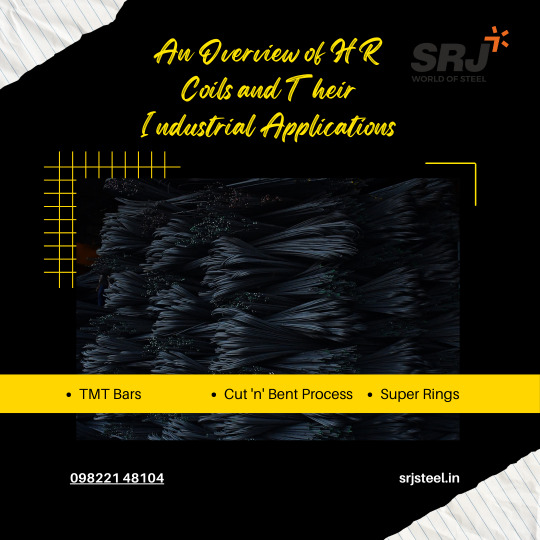
Hot rolled coils are considered the building blocks for many industries and have acted as a catalyst for industrial growth owing to their versatility and dependability. These are products of steel manufactured through thermal and mechanical processing with great accuracy, hence finding their application across various industries, from automobile parts to the construction business.
Understanding HR Coils: The Marvel of Manufacturing
Hot rolling refers to the process of making thick steel slabs into thinner, more usable coils through a complex series of heating above their recrystallization temperature—usually around 1,700°F or 926°C—in order to allow the metal to be at its most malleable. This enables the metal to be rolled down to desired thicknesses without loss in structural integrity.
Salient Features Define Quality HR Coils
The remarkable properties of the HR coils result from their processing:
Surface Finish: Mill scale finish.
Dimensional Tolerance: Exact tolerance thickness.
Mechanical Properties: Strength and ductility enhanced.
Material Homogeneity: Homogeneous material in the coil.
Conclusion
The features discussed above have enhanced the properties of HR coil, thus highly commendable for use in areas where good mechanical properties and less cost of manufacture are vital.
Industrial Uses of the Coils in Different Sectors
Automotive Sector
HR coils have a number of major applications in the automotive industry, which are as follows:
Chassis Components: Frame rails, cross members.
Structural Elements: Body panels, reinforcements.
Wheel Rims: Strong, solid components.
Excellent formability and strength-to-weight ratio make the material quite ideal for meeting high automotive safety standards without compromising productivity.
Construction and Infrastructure
HR coils play a vital role in building strong infrastructure. Some of their applications are as follows:
Structural Steel: Beams, columns, and support structures.
Roofing Systems: Metal roofing panels and components.
Bridge Components: Deck plates and supporting elements.
The material's durability and load-bearing capacity make it indispensable in construction projects of all scales.
Heavy Equipment Manufacturing
The heavy machinery sector utilizes HR coils for:
Equipment Frames: Robust structural components.
Buckets and Attachments: High-wear applications.
Storage Tanks: Large-volume containment solutions.
Quality Considerations and Selection Criteria
Material Grade Selection
Choosing the appropriate HR coil grade depends on several factors:
End-use requirements.
Environmental exposure conditions.
Processing capabilities.
Cost considerations.
Regulatory requirements.
Surface Quality Requirement
Applications require surfaces of different qualities:
Commercial Quality (CQ): Applications of a general nature.
Drawing Quality: Improved surface.
Structural Quality (SQ): Applications that bear loads.
Economy and Financial Advantages
There are some significant economic advantages of using HR coils:
Lower Production Cost: Fewer processes are required for them than cold-rolled ones.
Less Energy Consumption: Less energy spent to produce the material.
Less Material Waste: The materials will be used most efficiently.
Longer Service Life: Durability in demanding applications.
Environmental Impact and Sustainability
State-of-the-art production methods for HR coils are heading towards sustainability by:
Energy-Efficient Processing: By using state-of-the-art heating and cooling systems.
Integration of Recycling: Steel products can be highly recycled.
Waste Reduction: Waste generation can be reduced through optimized production planning.
Environmental Compliance: Globally accepted standards are followed.
Future Trends and Innovations
Evolution in the HR coil industry continues with:
Development of AHSS.
Advanced surface technologies.
Improved process control systems.
Integration of smart manufacturing.
Informed Decision-Making
While choosing HR coils for specific purposes, one should consider:
Technical Requirements: Mechanical properties, dimensional specifications, and surface finish requirements.
Consultation with metallurgical expertise and experienced suppliers regarding optimum results in certain applications will also be useful to select the correct specification for the HR coil. The right choice of material, processing requirement, and quality control can be advised accordingly to successfully apply in specific industrial projects.
#HR coils#hot rolled steel#industrial steel applications#steel coils#construction materials#automotive steel
1 note
·
View note
Text
Freaky thing reveal (I hate this damn thing !!)
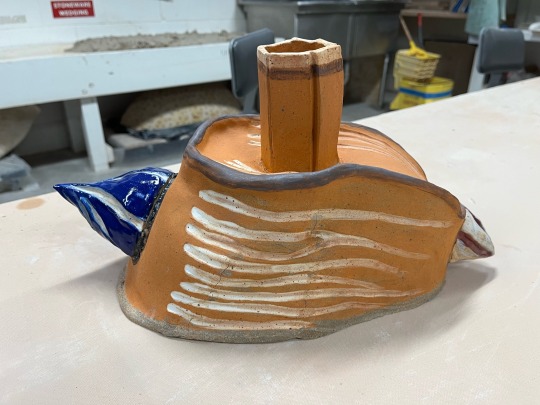
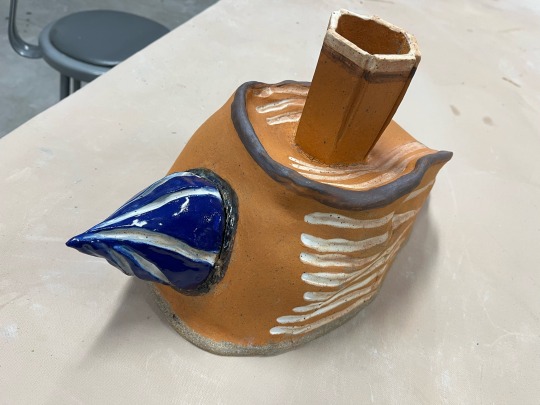
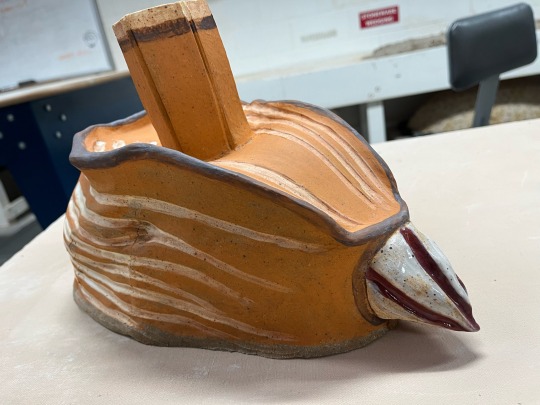
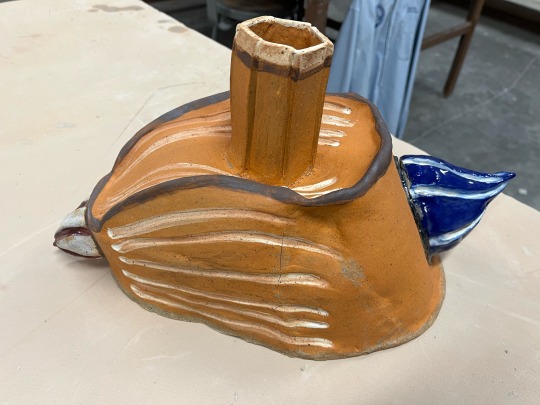

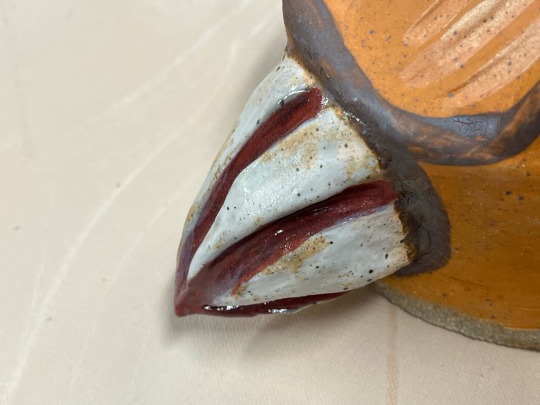
Evil thing pictures enjoy
#ceramics#ceramist#ceramic glaze#stoneware#clay art#clay#handbuilding#underglaze#Pete’s clear glaze#slab and coil method#clay sculpting#3d artwork#3d art#artists on tumblr#artist support#original art#new art tumblr#new artist#orange#blue#red#white#I tried to make my own Moche vessel but I failed miserably#least favorite project of the semester#could you believe this was supposed to be a conch shell#Ivan the terrible really cursed me during this project deadass
2 notes
·
View notes
Text
Hands in Clay: Enriching Pottery Classes Near Me by Brighton Recreational Centre

In a world dominated by screens and fast-paced routines, many are rediscovering the joy of hands-on, creative activities. One such therapeutic and rewarding pursuit is pottery. If you've found yourself searching “pottery classes near me”, you’ll be pleased to know that Brighton Recreational Centre offers some of the most comprehensive and inspiring pottery programs in Melbourne's Bayside area. These classes are perfect for anyone looking to explore a new hobby, develop artistic skills, or simply enjoy some mindful time working with clay.
Why Pottery?
Pottery is a blend of science, art, and mindfulness. It involves shaping clay into functional or decorative items, allowing people to express their creativity while also learning patience and technique. Whether you’re making your first pinch pot or throwing on the wheel, pottery is known to boost mental well-being, improve hand-eye coordination, and even reduce stress. It’s an activity that appeals to children, adults, and seniors alike.
Brighton Recreational Centre: A Community Hub for Creativity
Located in the heart of Brighton, Brighton Recreational Centre has been serving the local community for decades. Known for its welcoming atmosphere and diverse range of programs, the Centre has established itself as a trusted destination for artistic and recreational learning. Their pottery studio is equipped with modern wheels, kilns, and tools, and their experienced instructors provide tailored guidance to each participant—whether you're a first-timer or a returning student.
Pottery Classes for All Ages and Abilities
One of the greatest strengths of Brighton Recreational Centre’s pottery program is its inclusivity. The Centre offers a variety of classes to cater to every skill level and interest.
1. Beginner Classes
If you're completely new to pottery, the beginner classes are the perfect introduction. These sessions cover the basics of hand-building, wheel throwing, and glazing. Participants will learn how to shape bowls, mugs, and small sculptures using simple yet effective techniques. The supportive learning environment encourages creativity and builds confidence with each session.
2. Intermediate and Advanced Workshops
For those who have mastered the basics, the Centre runs advanced classes that focus on refining throwing skills, creating larger or more complex forms, and exploring various glazing techniques. These sessions often dive deeper into artistic expression and encourage students to push their creative boundaries.
3. Kids' Pottery Classes
The Centre also runs engaging and educational pottery classes for children. These classes are designed to introduce young minds to the world of ceramics through fun, tactile learning. Kids love the process of getting messy, shaping their ideas into clay, and seeing their work come to life after firing.
4. School Holiday Programs
During school breaks, the Centre offers short-term pottery intensives for children and teenagers. These workshops are a great way to keep kids entertained while enriching their artistic abilities. They often conclude with a mini exhibition for parents to view their children’s creations.
5. Private Sessions and Group Events
Looking for a unique team-building activity, birthday celebration, or a creative date idea? Brighton Recreational Centre also offers private group pottery sessions. These one-off classes provide a fun, relaxing, and collaborative experience for people of all ages.
What You Can Expect to Learn
Participants in Brighton’s pottery classes can expect to gain a wide range of skills:
Basics of clay preparation and wedging
Hand-building techniques (pinching, coiling, slab construction)
Wheel throwing (centering, pulling walls, trimming)
Surface decoration and texturing
Glazing and underglazing methods
Kiln loading and firing process
Finishing and polishing completed pieces
Every student completes the class with unique, handcrafted pottery items and a deeper understanding of the ceramic arts.
The Wellness Side of Pottery
More than just an art form, pottery is also a powerful tool for mental well-being. The slow, rhythmic process of shaping clay encourages mindfulness and a connection to the present moment. It helps reduce anxiety, provides sensory satisfaction, and fosters a deep sense of accomplishment. In group classes, it also builds community and camaraderie as participants share ideas, successes, and laughs.
Facilities and Materials
Brighton Recreational Centre provides everything you need:
High-quality clay and glazes
Fully functional electric potter’s wheels
Firing services in on-site kilns
Aprons and tools for various techniques
Bright, well-ventilated studio spaces
The centre takes care of the messy parts, so you can focus on learning and creating. All materials are included in the course fee, ensuring no hidden costs or surprises.
Student Experiences
"The beginner’s class was such a joy. I learned how to make my own mug, and now I use it every day!" – Lisa T., Brighton
"Our kids love the pottery workshop. It’s their favorite holiday activity." – Martin S., Hampton
"The atmosphere in the class is calming, the teacher is encouraging, and I get to create something real with my hands." – Emily D., Elsternwick
Flexible Scheduling and Easy Enrollment
Brighton Recreational Centre offers pottery classes during mornings, evenings, and weekends to fit all lifestyles. Courses typically run for 6 to 8 weeks, with options for ongoing enrollment. Interested individuals can sign up online via the Centre’s official website or by visiting the Centre in person.
Accessible and Affordable
Keeping true to its community-oriented mission, Brighton Recreational Centre keeps class fees reasonable. Discounts are available for seniors, students, and concession holders. With all materials included and expert instruction provided, it’s one of the best value-for-money creative programs in the area.
Conclusion
If you've been searching for “pottery classes near me,” Brighton Recreational Centre is your answer. With expert instructors, state-of-the-art facilities, and a welcoming community atmosphere, their pottery programs offer a perfect blend of learning, relaxation, and artistic exploration. Whether you're aiming to develop a new hobby, bond with your children, or simply unwind through creativity, their pottery classes are a journey worth taking.
Join Brighton Recreational Centre’s pottery community—where clay, creativity, and community come together.
1 note
·
View note
Text
A Beginner’s Guide to Making Pottery

Pottery offers a fulfilling blend of creativity and functionality, allowing you to shape objects from raw clay into something uniquely your own. As you begin exploring this craft, understanding the basic process, tools, and techniques is essential for making your experience enjoyable and productive. The journey into pottery does not demand expertise but benefits significantly from patience and curiosity.
Clay selection can help you familiarize yourself with the material. For beginners, air-dry or earthenware clay is a practical option due to its forgiving nature and easy handling. This clay requires minimal starting tools, making it ideal for practicing coiling, slab-building, and pinching techniques. Over time, you can experiment with stoneware or porcelain clay, which requires firing in a kiln for durability and a refined finish.
When working with pottery, shaping techniques form the foundation of your creative output. Hand-building introduces coiling and slab construction, which entails molding clay without a wheel. Slab building requires rolling flat clay sheets to cut and assemble components, whereas coiling creates hollow structures by stacking and smoothing clay coils. With these methods, you can make practical and ornamental things without using a pottery wheel.
The wheel offers another avenue for creation. In wheel-throwing, you center a ball of clay on a rotating wheel and use your hands to mold it into symmetrical forms. Beginners often find centering the clay challenging, but the process becomes easier with practice. Keeping the clay moist while working prevents cracks and uneven shapes, allowing better control over the final form.
Once your piece takes shape, drying and firing are the next steps. Clay needs to dry slowly and evenly to prevent cracks caused by uneven moisture loss. This stage, known as the leather-hard phase, allows you to add finishing details such as handles, textures, and carvings. Once thoroughly dried, the clay transforms into greenware, which can be bisque-fired in a kiln. This firing hardens the clay but keeps it porous, preparing it for glazing.
Glazing introduces color and protection. You apply a liquid mixture of minerals that forms a glass-like coating on the pottery when fired at high temperatures. This step enhances the visual appeal of your piece and makes it functional by sealing the surface. Glazes come in glossy, matte, and textured finishes, allowing you to experiment with styles and aesthetics. Understanding how glazes interact with different clay and firing temperatures will improve your results.
The tools you use play significant roles in shaping and refining pottery. Simple tools such as wooden modeling sticks, wire cutters, sponges, and rolling pins manipulate the clay. For refined detailing, trimming tools and ribs give precisely smooth edges, carve patterns, and shape surfaces.
Mistakes are a natural part of learning pottery. Cracks, collapsed pieces, and uneven forms are common when starting, but each mistake teaches you something about the materials and procedures. Learning to troubleshoot common issues, such as overly dry clay or improper centering on the wheel, ensures steady progress. Over time, you realize how small changes improve the result.
As you continue exploring pottery, the experience becomes more than a hobby. It offers a way to slow down, focus on the moment, and connect with something tangible.
0 notes
Text
How Can Steel Mill Transfer Cars Improve Efficiency in Industrial Operations?

Steel mill transfer cars are vital components in the steel production process, playing a significant role in transporting heavy loads across the mill. These robust, durable machines are designed to move materials such as steel coils, slabs, billets, and more with ease and precision. In this blog, we will explore the importance of steel mill transfer cars, their benefits, and the role of advanced equipment like Shock Transmission Units (STUs) in enhancing their performance.
What Are Steel Mill Transfer Cars?
Steel mill transfer cars are specialized vehicles designed to transport heavy loads within a steel mill. They offer:
Enhanced safety for workers by reducing manual labor
Efficient transportation of materials over long distances
Customizable designs to meet the specific needs of each steel mill
Durability to withstand the harsh conditions of steel production environments
The primary goal of these transfer cars is to boost efficiency and safety in steel mills. These machines come in various types, including electric, battery-powered, and rail-mounted, depending on the specific requirements of the operation.
The Importance of Steel Mill Transfer Cars in Operations
Steel mill transfer cars play a critical role in the efficiency of production. Without these cars, steel mills would rely on manual labor or less efficient methods of material transportation, leading to:
Increased risk of injury for workers
Lower production rates
Higher operational costs due to time-consuming manual transport
Increased wear and tear on equipment from frequent use
By using steel mill transfer cars, steel production becomes smoother, faster, and more reliable. These cars can handle extreme weights and transport materials safely, reducing the need for excessive manpower.
Benefits of Using Steel Mill Transfer Cars
Steel mills benefit in numerous ways from incorporating transfer cars into their production process, including:
Increased Safety: Steel mill transfer cars minimize the risk of accidents and injuries by automating the transport of heavy materials.
Cost Efficiency: These machines reduce the need for manual labor, which cuts down on operational costs.
Improved Productivity: Transfer cars can quickly and efficiently move materials across the mill, boosting overall production speed.
Durability: Built to withstand harsh environments, transfer cars offer long-lasting performance.
By enhancing the transportation of steel products, transfer cars contribute significantly to the overall productivity and profitability of the mill.
The Role of Shock Transmission Units (STUs) in Steel Mill Transfer Cars
One of the most critical innovations in improving the performance of steel mill transfer cars is the integration of Shock Transmission Unit (Stu). These units are designed to absorb and control the forces generated during the transportation of heavy loads, ensuring smoother and safer operations. STUs are especially valuable in high-impact scenarios where the shock and vibrations can damage both the materials being transported and the equipment itself.
Shock Absorption: STUs help in minimizing the impact on the car when transporting heavy steel loads.
Extended Equipment Life: By reducing vibrations and shocks, STUs can extend the lifespan of steel mill transfer cars and other machinery.
Improved Safety: The integration of STUs enhances the safety of operations by minimizing sudden jolts or shocks that could lead to accidents.
Incorporating Shock Transmission Units (STUs) into transfer cars ensures that they operate more smoothly and with less wear and tear, ultimately improving the efficiency of the entire steel production process.
Customization and Advanced Features in Steel Mill Transfer Cars
Steel mill transfer cars are highly customizable to meet the unique needs of each production facility. Depending on the specific requirements, transfer cars can be outfitted with:
Automated Controls: For improved precision and efficiency
Load-Sensing Technology: To monitor and adjust for different load weights
High-Capacity Batteries: For longer operational periods in battery-powered models
Robust Shock Transmission Units (STUs): To protect the car and its cargo from damage during transportation
These features, combined with the integration of modern technology, make steel mill transfer cars an indispensable tool in steel production facilities.
Why Invest in Steel Mill Transfer Cars?
For any steel mill looking to improve its efficiency, investing in steel mill transfer cars is a must. The benefits extend far beyond simple material transportation. They lead to:
Increased Operational Efficiency: By automating and streamlining material transport, production rates can be significantly improved.
Enhanced Worker Safety: Transfer cars reduce the physical strain on workers and minimize the risks associated with manual material handling.
Long-Term Savings: With reduced labor costs and improved equipment longevity, transfer cars offer long-term financial benefits.
In addition, the use of advanced components like Shock Transmission Units (STUs) further enhances the value of these cars, ensuring smoother operations and less downtime due to equipment failure.
Conclusion
Steel mill transfer cars are essential for modern steel production, offering numerous benefits in terms of efficiency, safety, and cost-effectiveness. With the addition of Shock Transmission Units (STUs), these cars become even more effective at transporting heavy loads with minimal impact on the equipment and materials. If your steel mill is looking to improve its productivity and operational safety, investing in steel mill transfer cars with advanced features like STUs is a wise choice.
For more information on steel mill transfer cars and their customization options, visit Metal Engineering.
#Steel Mill Transfer Car#Shock Transmission Unit (Stu)#Pot Bearing#Pot Ptfe Bearing#Spherical Bearing
0 notes
Text
Week Four
This week we had a self directed task and from the list of possible materials I chose to work with clay. I used coiling to create a pot shaped object.
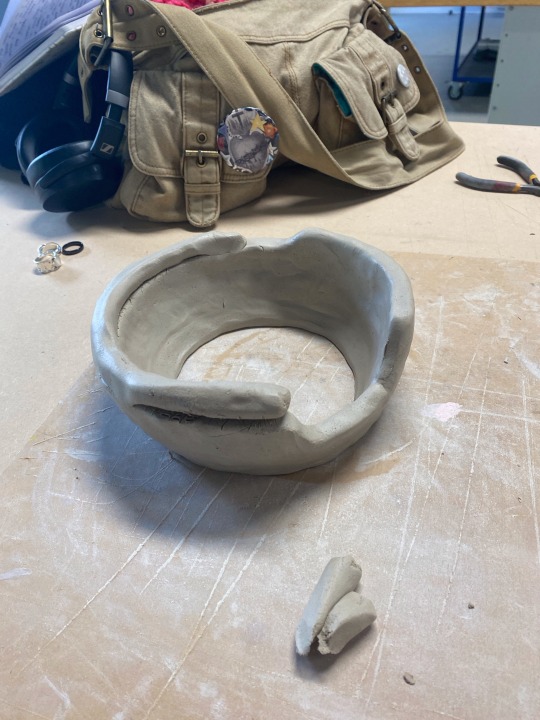


I began by creating a rounded, almost spherical shape with two holes of slightly different sizes and heights. At the point of finishing the second hole, I started thinking of ways to extend the piece that would allow it to interact with its environment.
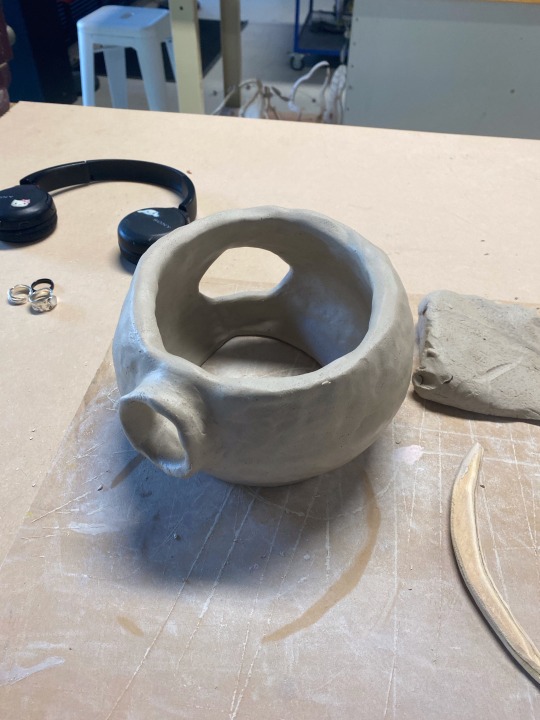
I decided to create pipes extending from each hole, planning to make these pipes work with an environment that has circular forms of the same size. I also did the coiling method during this part. Looking back I think it would have been both faster and easier to use slabs of clay, but I still like the results regardless.
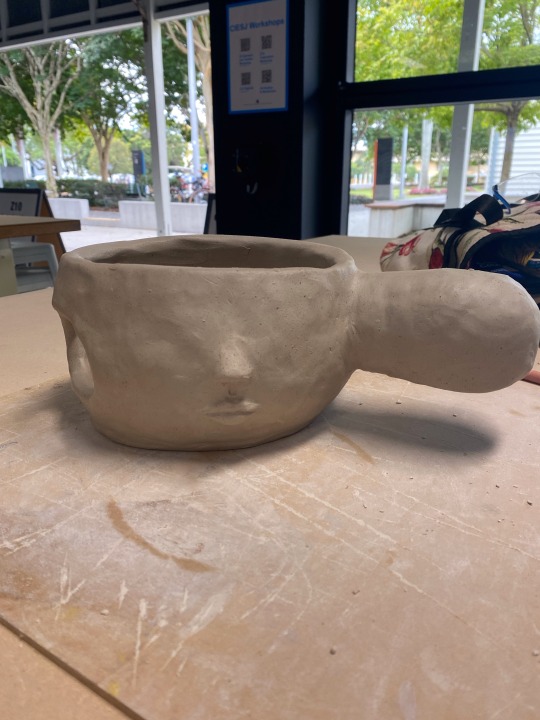
I then decided to also add facial features to the work, giving it a sense of life and anthropomorphism. I started with just a nose and mouth, which at first was all I had planned to add. I then finished the outer pipe, created a second pipe going inwards. After making these pipes, I decided that compositionally, an eye on the outer pipe would look cool.


0 notes